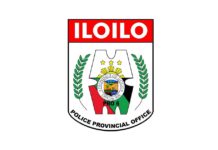[av_one_full first min_height=” vertical_alignment=” space=” custom_margin=” margin=’0px’ padding=’0px’ border=” border_color=” radius=’0px’ background_color=” src=” background_position=’top left’ background_repeat=’no-repeat’ animation=”]
[av_heading heading=’ILOILO ‘TREASURE’ SAVED FROM RUIN
San Joaquin camposanto survives greed for riches ‘ tag=’h3′ style=’blockquote modern-quote’ size=” subheading_active=’subheading_below’ subheading_size=’15’ padding=’10’ color=” custom_font=”]
BY MERIANNE GRACE EREÑETA
[/av_heading]
[av_textblock size=” font_color=” color=”]
ILOILO – Greed almost ruined one of Iloilo’s national cultural treasures – the ancient camposanto (cemetery) of the southern town of San Joaquin. Thankfully, it has been saved from destruction.
The 60-foot deep tunnel that illegal treasure hunters clandestinely dug inside the camposanto’s Baroque mortuary chapel early this year had already been backfilled.
The local government unit of San Joaquin and the town’s Parish Pastoral Council joined hands in saving the chapel and cemetery that were over a century old.
Late last year, the National Museum declared the San Joaquin camposanto, built in 1892, a national cultural treasure for “possessing outstanding historical, cultural, artistic and/or scientific value which is highly significant and important to the country.”
The declaration aimed to ensure the camposanto’s protection, preservation and promotion. This, however, failed to prevent treasure hunters from almost destroying its foundations.
On Feb. 24, 10 people were caught digging a tunnel inside the ancient mortuary chapel. They were allegedly looking for gold and other buried treasures.
“The people of San Joaquin showed their concern and cooperation. We rehabilitated the camposanto. We immediately addressed the problem,” Mayor Ninfa Garin told Panay News.
This Nov. 1, the National Museum formally unveils the camposanto marker as a national cultural treasure.
The backfilling started on July 1 – almost five months after the treasure hunting was discovered in February – and lasted for three weeks.
A combination of soil and cement was used for the backfilling, according to Sangguniang Bayan member Virgilio Nacion.
“We followed the procedures recommended by the National Museum. Our laborers were very careful to avoid further damaging the camposanto,” he said.
The San Joaquin camposanto is located along the main highway. Its construction was commenced by Fray Mariano Vamba, the last Augustinian parish priest of the town, in 1892, six years before the Philippine Revolution against Spain broke out.
A statue of Jesus with his arms outstretched stands on top of a Baroque-style gate, and on each side of Christ, two columns with angelic figures are poised as guards. Sculpted heads of two cherubs and a skull representing death marks the entrance of the cemetery.
Twenty stone steps from the gate is the Baroque mortuary chapel made of red bricks and coral stone standing on the center. Inside it, the town’s ancient priests were buried.
Now, the camposanto is being closely guarded by the local government of San Joaquin and the Parish Pastoral Council.
No treasure hunting must happen again in the camposanto, stressed Nacion.
“Sinirâ nila ‘yung (they destroyed the) foundations…(the diggings) weaken(ed) the ground,” said National Museum assistant director Angel Bautista after conducting an inspection days after the illegal activity was discovered.
He immediately recommended the backfilling.
According to Nacion, the backfilling cost P83,000. The local government of San Joaquin and Parish Pastoral Council shelled out the money for it.
“This is collaborative effort. Private individuals also gave assistance,” said Nacion.
The 10 diggers were charged with violating Republic Act 10066 (National Cultural Heritage Act of 2009) by the San Joaquin police station.
The then parish priest of San Joaquin, Reverend Father Nelson Silvela, was implicated in the digging and was also charged. Three days after the discovery of the camposanto treasure hunting, he took an indefinite leave of absence.
Two persons have spoken about what they claimed they knew – Poblacion barangay captain Napoleon Secondes and Baltazar “Billy” Savari, the camposanto caretaker. They claimed Father Silvela knew about the diggings as early as December last year./PN
[/av_textblock]
[/av_one_full]







